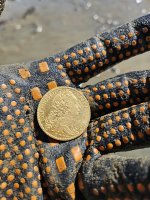- May 9, 2012
- 22,332
- 70,375
- Primary Interest:
- Other
He'd a had to haul water to sample sites or haul samples to water to pan right? Sans water a drywasher could ,once decent color located be used to hop skip till color overshot where deposits entered bed from source if hard rock kept it up in reach?










